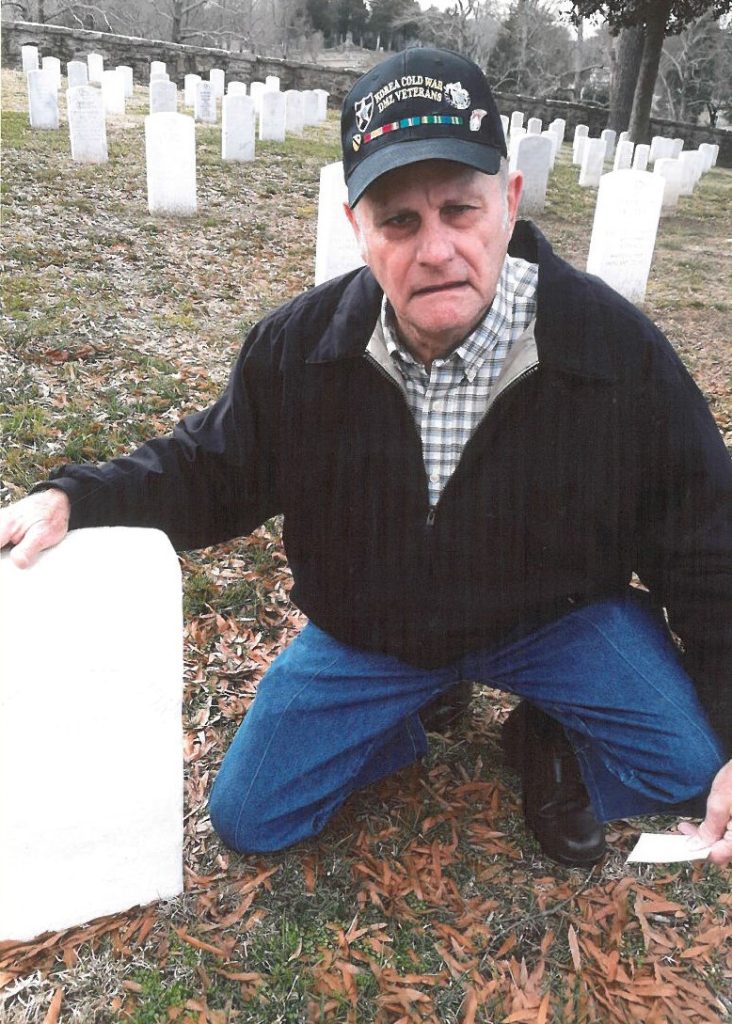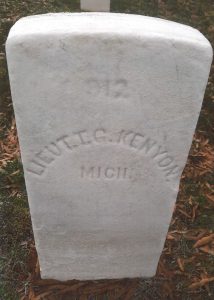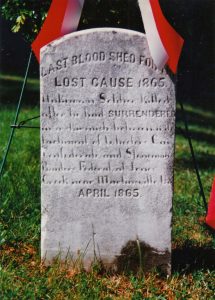
By Brandon Martin
Each year on November 11, millions of Americans step back from their daily lives and pay homage to the many veterans who have served to preserve our country’s guiding principles of liberty and equality.

Not all veterans are remembered as vividly, as the ever-changing tide of history has washed many of their memories to the wayside. Fortunately, the curiosity of some has revived those memories, and now at least one more veteran can be remembered.
David Minter, a resident of the Iriswood District, said he began researching military history after serving himself.
Given his service in the 7th Cavalry Regiment during the Korean Conflict, Minter said that he naturally took an interest in a local cavalry battle that occurred on April 8, 1865.
On that day, five soldiers from the 10th Michigan Cavalry were killed in a skirmish with Capt. James Wheeler’s rebels near Jones Creek in Henry County.
The remains of the fallen soldiers were later placed in a cemetery at the First Episcopal Church, which once stood near the Historic Henry County Courthouse.
Desmond Kendrick, an archivist in Martinsville, said the graves of many of the Union soldiers were moved to the National Cemetery in Danville about a year later.
After researching, Minter said he located at least one of the graves. It belongs to Lt. Thomas C. Kenyon.
According to Volume 40 of Michigan in the Civil War, Kenyon was described as “a gallant young officer.” He enlisted in 1863 and was promoted to second lieutenant in 1864. He previously served with another regiment and spent six months as a prisoner of war following the 1862 Battle of Shiloh.
Four other soldiers from the 10th Michigan Cavalry also were identified – Sgt. John Benton, Pvt. George Wood, Pvt. Joseph Cune and Pvt. Ira E. Harvey.
“When they moved Kenyon, they would have moved the other four,” Minter said. “It’s a big mystery as to where they are now. There is no evidence of their graves and their names are not on the list at the National Cemetery.”
Minter said he considers his discovery of Kenyon’s grave to be “a big deal” for Civil War history buffs. “When people come locally and research the Civil War trails, it’s good to know where the graves of some of the men are. If they want to finish their tour of the trails, they can visit Danville and experience a little of our local history through Kenyon’s gravesite.”
Kendrick said that he also spends some of his free time visiting and documenting Civil War graves in the area.
After the First Episcopal Church cemetery was condemned around 1885, Kendrick said most of the graves were moved to Oakwood Cemetery in Martinsville.
The grave of one Union soldier, Benjamin Franklin Stevens, can be found at Oakwood, he said. In addition, there are 69 known and eight unknown, Confederate soldiers who also were laid to rest there – including one who died in the April 8, 1865 skirmish.
The remains of this unknown Confederate soldier were originally buried near the graves of the five Union soldiers from the 10th Michigan Cavalry.

Referencing an excerpt from a letter written by another Confederate soldier, Kendrick said that “some of the Union soldiers stayed in town and had taken the body (of the unknown Confederate soldier) hostage” before it was reclaimed by locals, placed in a wooden casket and buried in the church cemetery “as far away from the Union soldiers as possible.”
The epitaph from the soldier’s grave, now located at Oakwood, reads “Last Blood Shed for the lost cause. Unknown soldier killed after he had surrendered in a skirmish between detachment of Wheeler’s company, Confederate, and Stoneman’s raiders, Federal at Jones Creek, near Martinsville, Va. April 1865.”
Kendrick said the overall number of deaths in that battle is still up for debate. While the five soldiers from Michigan have been identified, Kendrick said he has heard that seven Union soldiers died that day, along with the one Confederate soldier buried at Oakwood.

According to Kendrick, two Union soldiers killed during the skirmish at Jones Creek were buried in Dr. James Moss Smith’s backyard and later moved to the National Cemetery.
As the tide of history continues to change, Minter and Kendrick are hopeful that more of the Civil War graves will be discovered and identified so those soldiers may also be remembered for their sacrifices.



